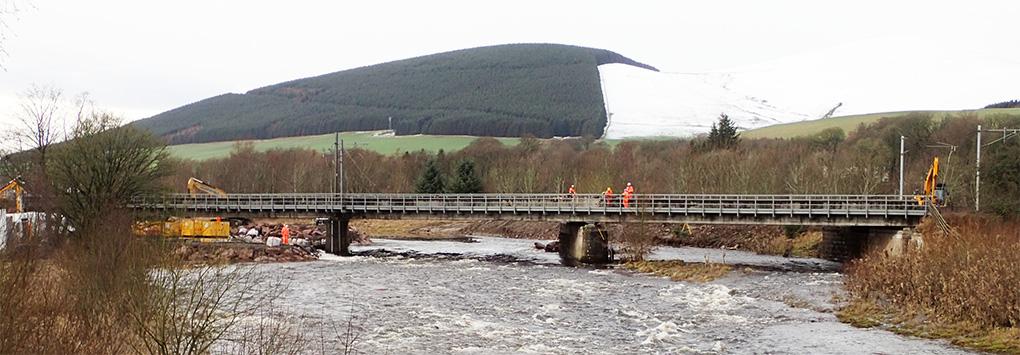
Following an investigation by the Office of Rail and Road (ORR), Scotland’s Crown Office and Procurator Fiscal Service has prosecuted Network Rail for allowing trains to travel at more than 100mph over a badly storm damaged viaduct.
Network Rail has now been fined £10,000 for the safety breach, by Lanark Sheriff Court, after pleading guilty to an offence under health and safety law.
Lamington Viaduct in South Lanarkshire was badly damaged after severe storms in late 2015. Network Rail allowed several trains to cross the viaduct before realising it had been damaged and eventually closed the line for seven weeks for major repair works.
Commenting from ORR, HM Chief Inspector of Railways Ian Prosser CBE said:
Notes to editors Collapse accordion Open accordion
- Lamington Viaduct carries the West Coast Main Line, between Carlisle and Glasgow Central, across the River Clyde in South Lanarkshire. The viaduct’s structural piers stand in the river channel.
- The viaduct was severely damaged by flood waters during Storm Frank on New Year's Eve 2015. An engineering assessment discovered that floodwater had scoured much of the foundations of the second pier.
- A train driver reported a defect on the track on the morning of 31 December 2015 and trains were told to cross at low speed while a maintenance team from track operator, Network Rail, was sent to the site.
- The team found "no significant track defects" and the speed restriction was lifted, allowing further trains to cross despite the viaduct having been damaged. When the 05:57 Crewe to Glasgow service later passed over the viaduct at about 110mph, the maintenance team noticed "large track movements" and immediately put a speed restriction in place.
- The maintenance team noticed the viaduct’s central pier was damaged by scour - removal of the riverbed beneath the pier foundation - and closed the line. A stone had fallen out of the pier and there were large cracks above the gap. Divers later found a hole one metre deep under the foundations.
- A derailment could have resulted in multiple casualties or fatalities.
- The viaduct, which carries the railway over the River Clyde, was closed for major repair work and did not reopen until late February 2016.
- The Rail Accident Investigation Branch (RAIB) investigation into the train crossings discovered major flaws in the bridge-monitoring and safety assessment programme.
- At Lanark Sheriff Court, Network Rail pled guilty to:
- Between 28 August 2015 and 31 December 2015 at Lamington Viaduct, near Lamington, South Lanarkshire and elsewhere in Scotland you NETWORK RAIL INFRASTRUCTURE LIMITED being an employer within the meaning of the Health and Safety at Work etc Act did fail to conduct your undertaking in such a way as to ensure, so far as was reasonably practicable, that persons not in your employment who may have been affected thereby were not exposed to risks to their health or safety in that you did fail to have in place an effective process to manage scour risk on the West Coast Main Line, in particular, at Lamington Viaduct in that, having assessed said Lamington Viaduct as being in the higher risk category for scour failure, you did fail to provide adequate information, instruction and training to your employees responsible for the management of said risk regarding these procedures which required to be implemented by them in the management of said risk; CONTRARY to Sections 3(1) and Section 33(1)(a) of the Health and Safety at Work etc. Act 1974.


